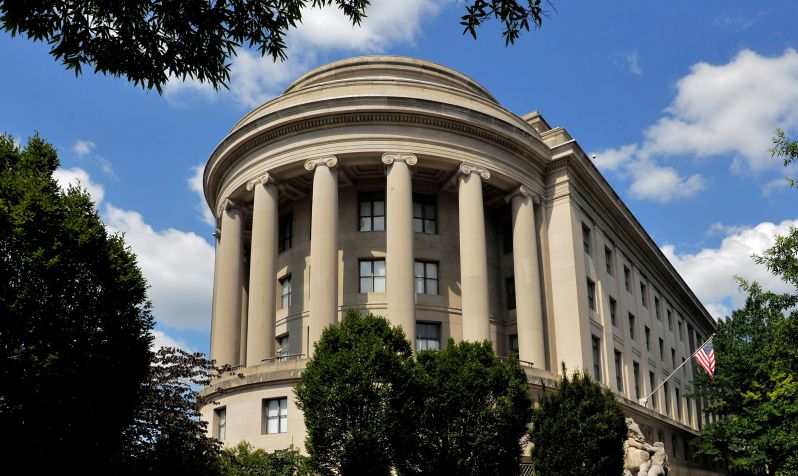
High-level officials within the FTC call for the return of a key enforcement authority.
The Federal Trade Commission (FTC) may face an existential threat to its ability to hold corporate lawbreakers accountable. A pending U.S. Supreme Court case threatens the FTC’s ability to seek monetary relief from wrongdoers, while mounting public concerns about the adequacy of the FTC’s enforcement have led to a crisis of confidence in the agency.
The solution to this urgent crisis involves restoring a key FTC authority, according to a new paper by FTC Commissioner Rohit Chopra and his attorney advisor Samuel Levine.
After tracing the history of the FTC’s enforcement tools and explaining their current inadequacy, Chopra and Levine argue that reviving the FTC’s Penalty Offense Authority will improve the FTC’s effectiveness and regain public confidence by increasing deterrence and ensuring fairness for honest firms.
Established by the FTC Act, the FTC has a mission to “protect consumers and competition by preventing anticompetitive, deceptive, and unfair business practices.” Chopra and Levine, however, highlight the FTC’s concerning track record in fulfilling this mission.
In the 1980s, the FTC’s leadership viewed markets as self-correcting, and the agency shifted its focus from market-wide abuses to “small-scale criminal fraud.” Seeking to avoid the derisive label of a “national nanny,” the FTC began to disarm the administrative state by halving the agency’s staff, reversing rulemakings, and adopting policies restricting the agency’s own authority.
The FTC’s ideology of the 1980s had lasting consequences, according to Chopra and Levine. In the 1990s, the agency failed to challenge tobacco advertising directed at children. In the 2000s, the FTC took minimal enforcement action to prevent the mortgage meltdown, remaining largely idle as subprime lenders sold loans structured to fail. Congress responded by stripping the FTC of major authorities over the financial sector, such as rulemaking on mortgages and debt collection.
Chopra and Levine argue that the agency’s inaction over several decades has resulted in “massive harm for consumers, small businesses, and the economy.” They call for a shift toward “systematic efforts to combat widespread harms.”
A key step, say Chopra and Levine, involves resurrecting the agency’s Penalty Offense Authority. Codified in Section 5 of the FTC Act, this provision allows the FTC to correct and deter harmful practices.
Currently, the FTC largely relies on Section 13(b) of the FTC Act, which allows the agency to seek preliminary and permanent relief in federal court. But the use of Section 13(b) has been challenged in multiple cases, including in a pending U.S. Supreme Court case challenging the FTC’s authority to seek equitable monetary relief.
Even if courts uphold the use of Section 13(b), argue Chopra and Levine, this enforcement tool remains inadequate in correcting and deterring widespread harms. To seek monetary relief under Section 13(b), the FTC must approximate harms or unjust gains—a potentially difficult and costly calculation. As a result, the FTC often resorts to no-money settlements that do not adequately deter wrongdoing. In addition, corporate wrongdoers tend to be undeterred by equitable relief sought under Section 13(b) since the worst consequence merely involves returning their earnings.
Instead of overreliance on Section 13(b), Chopra and Levine advocate greater use of the Penalty Offense Authority under Section 5 of the FTC Act. Under this authority, the FTC can seek civil penalties if the agency issued a final cease-and-desist order determining that a practice is unfair or deceptive and if a party subsequently engaged in that practice, knowing that the practice was unfair or deceptive.
Chopra and Levine note that the Penalty Offense Authority provides “strong due process protections for defendants.” For example, parties cannot be held liable unless shown to have actual knowledge of the FTC’s determination. Defendants can also challenge the FTC’s prior determination that the conduct was unlawful.
Previously, the FTC deployed its Penalty Offense Authority to target whole industries, in a manner that one FTC commissioner described as “extremely effective and efficient.” Nevertheless, the agency’s use of this tool rapidly declined in the 1980s, and it was used only once in the last decade.
Calling for renewed use of the Penalty Offense Authority, Chopra and Levine outline three key benefits of such a resurrection. First, compared to equitable relief, civil penalties would more effectively punish and deter wrongdoers. Second, the use of the Penalty Offense Authority would reduce litigation risk for the FTC. Current overreliance on Section 13(b) creates uncertainty as court cases challenge the program, and seeking monetary relief under Section 13(b) requires risky and expensive attempts to quantify harm. Finally, the Penalty Offense Authority provides market-wide impact. By providing notice to firms across an industry, the FTC can correct market-wide practices—increasing compliance and reducing the need to bring similar enforcement actions repeatedly.
Chopra and Levine specifically advocate the use of the Penalty Offense Authority in areas where a harmful practice has been condemned by an FTC order but not forbidden by an agency rule. They identify five areas where the FTC could deploy the Penalty Offense Authority based on existing orders: for-profit college fraud, false earnings claims targeted at workers, online disinformation, deceptive data harvesting, and illegal targeted marketing.
Ultimately, Chopra and Levine call on the FTC to shed its “self-inflicted paralysis” by drawing on a broader set of tools to protect the public.



